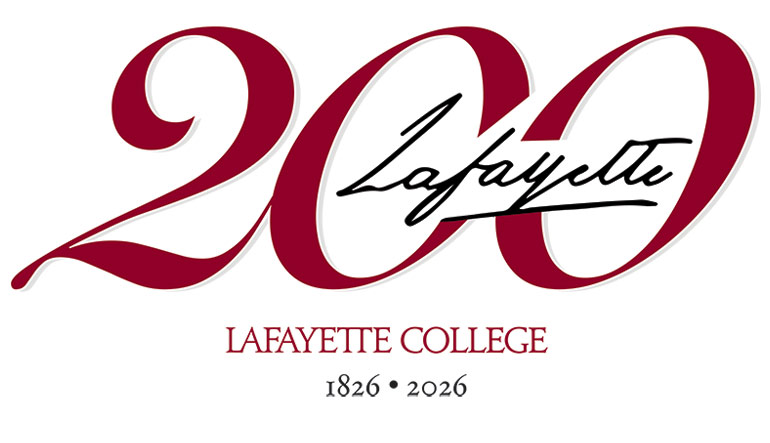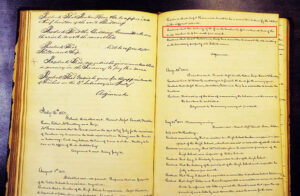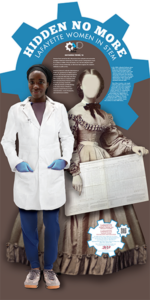Hidden No More: A Bicentennial Celebration of Women in STEM at Lafayette
Hidden No More: A Bicentennial Celebration of Women in STEM at Lafayette marks the Lafayette Bicentennial by recognizing the College’s deeply-rooted relationship with women doing science—regardless of whether those women were recognized or not. In doing so, it highlights the shared commitment to equity and inclusiveness that informs the complementary missions of the Women’s, Gender, and Sexuality Studies Program and the Hanson Center for Inclusive STEM Education.
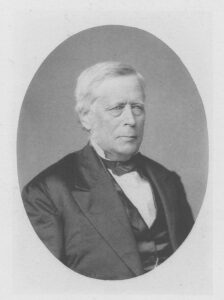
Professor James Henry Coffin
In the mid-nineteenth century, Lafayette College’s Professor James Coffin (professor of mathematics, natural philosophy, and astronomy) was mathematical head of the Smithsonian Meteorological Project, the first settler-operated weather data collection project in the US. This work became the foundation for modern meteorology and the National Weather Service.
The voluminous data processing associated with Lafayette’s contributions to the project was largely performed by a group of (white) women teachers from Easton’s public schools, who copied and calculated multi-year data.
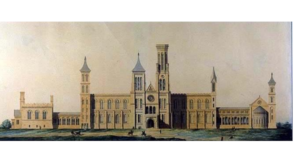
Smithsonian Building, North Facade, Smithsonian Institution Archives
These fifteen female teachers, who taught in Easton’s public schools for $15 a month while their male counterparts earned $30, were never credited in published materials. Their identities remain unknown.
In recognizing the contributions of these women, Hidden No More acknowledges their rightful place in the story of Lafayette College. We also celebrate their intelligence, curiosity, and dedicated effort, a legacy carried forward by the many Lafayette women—students, faculty and alumnae—who continue to make STEM history.

Easton Public School records (detail)
Weathering Bias: Lafayette College and the Invisible Women Scientists of the Smithsonian Meteorological Project
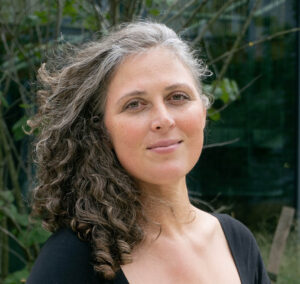
Dr. Sara J. Grossman
Presentation by Professor Sara J. Grossman
Associate Professor of Environmental Studies, Bryn Mawr College
2025-26 Barron Visiting Professor of the Environment, Princeton University
Thursday, November 6, 2025
4:15pm – 5:30pm
Oechsle 224
Dr. Grossman’s research has uncovered a Lafayette-centered hidden history of (white) women in science and reveals that the data collection and “computing” efforts associated with Lafayette were in fact largely performed by nameless women Easton school teachers. The College plays a pivotal role as both entry point and impediment for many of these women, who currently remain an unrecognized part of Lafayette history. Grossman’s interdisciplinary lecture will focus on this hidden history and examine how gender shapes the ways the scientific labor of women has (not) been recognized.
Grossman’s lecture reflects the shared missions of the WGSS program and the Hanson Center, by fostering interdisciplinary conversations, and raising awareness of Lafayette’s largely unknown history around gender, data, and STEM.

First known photograph of campus, taken in 1858 by Selden Coffin, son of Professor James Coffin

Engraving from 1850 map of Easton.
Hidden No More Exhibits
Coincident with Dr. Grossman’s lecture on Thursday, November 6, we will also kick off our celebration with the unveiling of three Hidden No More displays. These powerful, standing installations of (faceless) nineteenth-century women scientists and contemporary woman/alumnae scientists will be on display in the Oechsle Hall Lobby during the reception for Dr. Grossman’s lecture. Following this “opening night” exhibit, the displays will then be installed in the Pardee Hall lobby (near the Women’s, Gender and Sexuality Studies program), the Rockwell Integrated Sciences Center (where the Hanson Center is located), and the Skillman Library lobby. These “no-longer-hidden figures” will be displayed during Lafayette College’s Bicentennial Year. Their presence will bring Lafayette’s rich, substantive history of women in STEM directly into our bicentennial celebration, ensuring that the excellence of women in STEM is visible, celebrated, and affirmed.
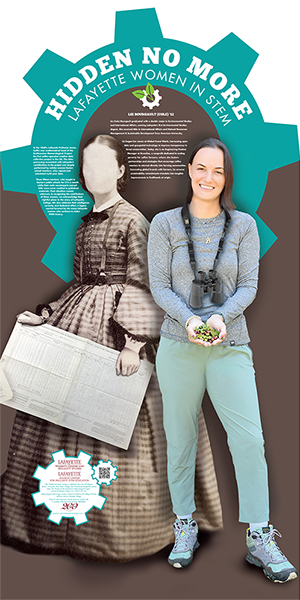 Liz (Cole) Bourgault ’12
Liz (Cole) Bourgault ’12
Liz (Cole) Bourgault graduated with a double major in Environmental Studies and International Affairs, earning Lafayette’s first Environmental Studies degree. She received MAs in International Affairs and Natural Resources Management and Sustainable Development from American University.
Liz began her career at Global Forest Watch, harnessing open data and geospatial technology to improve transparency in forest conservation. Today, she is an Engineering Product Manager at Enveritas, a nonprofit dedicated to ending poverty for coffee farmers, where she fosters partnerships and strategies that encourage coffee roasters to reinvest directly into farming communities. Connecting global brands with farmers, Liz ensures sustainability commitments translate into tangible improvements in livelihoods at origin.
E. Lara Lash ’13
Dr. E. Lara Lash graduated from Lafayette with a degree in Mechanical Engineering, and a minor in History. She went on to earn an MS and Ph.D. in aerospace engineering from the University of Tennessee.
Lara is currently an aerospace engineer at NASA Ames Research Center in California where she leads a team of engineers and software developers investigating the use of unsteady pressure-sensitive paint (uPSP) in large-scale aircraft and spacecraft wind tunnel testing. uPSP optically measures surface pressure distribution over the vehicle’s surface, producing data at a never-before-seen level that make rockets and other modes of flight safer and more efficient.
Savanna Touré ’21
Savanna Touré earned her degree in Neuroscience from Lafayette and received the prestigious Goldwater Scholarship, the nation’s premier undergraduate award for excellence in STEM. A Posse DC Scholar, she is the first Lafayette student to receive a Truman Scholarship, an elite honor that recognizes the recipient’s dedication to public service.
Savanna’s interest in molecular determinants of health was sparked by her EXCEL work at Lafayette. This interest persisted through her post-baccalaureate fellowship at the Mayo Clinic and her time as a researcher at the Duke University Human Vaccine Institute. Currently pursuing a doctorate in Molecular Genetics and Microbiology at the Duke School of Medicine, Savanna’s research focuses on host-viral interactions, vaccine therapeutics, and viral/immune evolution.
Acknowledgements
Hidden No More is a collaboration between the Women’s, Gender, and Sexuality Studies Program and the Hanson Center for Inclusive STEM Education. It is funded in part by the Bicentennial Academic Fund.

